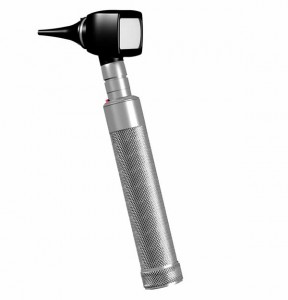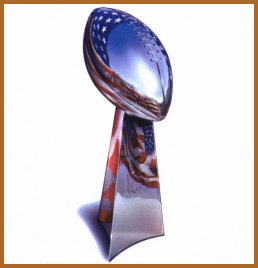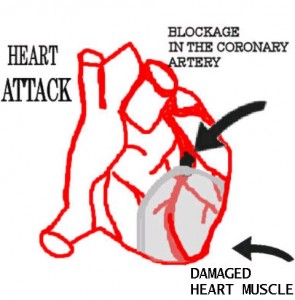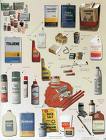 Some people have a compulsion to steal items from the ER that have absolutely no utility to them. Perhaps the most commonly stolen item is the head of the otoscope. The otoscope is a device we use to look in people’s ears. It has a detachable head that has a light inside of it and when you look through it into the ear, you can check for ear infections, foreign bodies, and other things. When the head is removed from the holder (which is bolted to the wall), it doesn’t work. It is completely useless. Unfortunately, when the head has been stolen, the handle also is completely useless. I can’t tell you how many times I’ve wanted to examine a patient’s ears and looked up to realize that there was no head on the otoscope. I actually have considered faking the exam–just holding up the useless handle near their ear and saying “Yeah, looks pretty good all right!” Instead, I go to the nearest empty room (if there is one), cannabilize another otoscope head and bring it back, cursing the vile thief who is wasting our time and money.
Some people have a compulsion to steal items from the ER that have absolutely no utility to them. Perhaps the most commonly stolen item is the head of the otoscope. The otoscope is a device we use to look in people’s ears. It has a detachable head that has a light inside of it and when you look through it into the ear, you can check for ear infections, foreign bodies, and other things. When the head is removed from the holder (which is bolted to the wall), it doesn’t work. It is completely useless. Unfortunately, when the head has been stolen, the handle also is completely useless. I can’t tell you how many times I’ve wanted to examine a patient’s ears and looked up to realize that there was no head on the otoscope. I actually have considered faking the exam–just holding up the useless handle near their ear and saying “Yeah, looks pretty good all right!” Instead, I go to the nearest empty room (if there is one), cannabilize another otoscope head and bring it back, cursing the vile thief who is wasting our time and money.
Other favorite items to steal include: surgical lubrication, bandaids, tongue depressors, and sterile gloves. Once I walked into a hallway near the exit and found a woman “helping herself” to hospital towels, and about to head out to the parking lot. These are towels that are imprinted with the name of the hospital all over them. They would not look good in your bathroom. I stopped and asked the woman, who was about 70 years old, “Are you stealing those towels?” and she looked down at the floor and said, “Yeah, I guess I am.”
I said to her, “You know I’ve got an idea. Why don’t you leave them there for now. Who knows? We might need them.” She said okay, and hurried off. I think she needed to get home to dust her otoscope head collection.
 It’s Superbowl weekend again, time for chips, dips, and brain injuries. Some will occur on the field, and others just from drinking too much and falling down.
It’s Superbowl weekend again, time for chips, dips, and brain injuries. Some will occur on the field, and others just from drinking too much and falling down.
We see a lot of head injury patients in the ER, many of them kids who play sports. The question always comes up, “when can he play football again?” Unfortunately, the answer is complicated. There are guidelines or course, and different systems for classification of concussion. Just about everyone agrees that patients should not return to sports until symptoms are gone (no headache, dizziness, amnesia, etc.).
However, many parents don’t seem aware of the fact that repeated head injury can cause permanent problems. Chronic traumatic encephalopathy (brain damage due to trauma) is frighteningly common in athletes who have a lot of head injuries. A recent study examined the brains of dead NFL players and found an alarming amount of brain damage, beyond what you would expect for age.
In boxers, brain damage due to repeated blows to the head is well known (dementia pugilistica). Famous examples of brain damage due to frequent head injuries include boxers Floyd Patterson, and Sugar Ray Robinson. By the way, Muhammed Ali didn’t have dementia pugilistica, just plain old Parkinsons disease. There have been 3 NFL players diagnosed after their deaths with chronic traumatic encephalopathy–Justin Strzelczyk who died in a car crash after a nervous breakdown, and Andre Waters and Terry Long who both committed suicide.
So if the question is, when can my kid play football again with no risk of permanent brain injury?
I’m afraid the answer is: never.
 Q:
Q:What is the difference between a mild heart attack and a major heart attack? Isn’t a heart attack a heart attack?
Q:
I heard the term
MI used on another blog. What is that and how do you treat it?
A:
Good questions, let’s knock out both at once. Actually you can have tiny heart attacks,
huge heart attacks and everything in between. A heart attack is when blood flow through the coronary arteries slows or stops resulting in damage to the heart muscle downstream. This is also known as “myocardial infarction” aka MI. Symptoms and the end result vary widely depending on the location of the obstruction in the coronary arteries. Some patients can have a heart attack with minimal pain, and never come in. We diagnose these after the fact. There is even a particular kind of blockage in the coronary arteries that is called the “widow-maker’s” heart attack. That’s because if a patient has this kind of blockage, it will cause a severe block in blood flow to a large part of the heart, often resulting in death.
 I’m starting to think narcissistic disorder is a relatively common affliction among the powerful. See my recent post on Rod Blagojevich. Perhaps there is a functional business or political advantage gained by this particular personality disorder.
I’m starting to think narcissistic disorder is a relatively common affliction among the powerful. See my recent post on Rod Blagojevich. Perhaps there is a functional business or political advantage gained by this particular personality disorder.
CEO of Merrill Lynch John Thain recently had to resign after it was discovered he had spent 1.2 million dollars redecorating his office. Doing that in the best of times seems insane to me, especially since the toilet alone cost $35,000. But to spend so frivolously when Merrill Lynch was completely imploding, and needing to be bought out by Bank of America is pathologic. Normal people would not ask the federal government for billions of dollars while their company was completely falling apart, and then spend that much on decorating. Oh, and he also bonused out several billion dollars to Merrill Lynch executives prior to their take over by B of A.
Wow.
As a doctor, I am pathologically motivated to explain this insane behavior by making a diagnosis, so we’ll go with narcissistic personality disorder. But why are these narcissistic people (Thain, Blagojevich, Bernie Madoff, etc) so successful? I mean they’re running companies, getting elected governor, and people are handing over their life savings to them. What gives?
Well, this can’t be coincidence. I put forth that their success is in fact due to their narcissism. Situations that would make the normal person nervous, and cautious, have no effect on these individuals. They simply charge forward to face whatever challenges life throws at them, and in so doing, appear heroic. At least initially. Then at some point, their heroism is recognized for what it really is–Hubris, foolishness, and narcissistic personality disorder.

Welcome to another installment of the Top 10 Ways to Avoid the ER
Number 4 – Drugs

Drugs like
methamphetamines, heroine, and
cocaine are the scourge of every emergency department I have worked in. Meth is the biggest problem now. If these drugs did not exist, I have no doubt that health care costs would be much lower, people would be much happier, and my job would be way easier.
Here are the problems you can anticipate if you are using these drugs:
Strokes
Heart attacks
Infections in the skin, heart and blood
Psychotic behavior (sometimes shrieking profanities at your ER doctor)
Rotting teeth
Heart failure
Liver damage
Kidney disease
Brain damage
It’s always amazing when I see patients who have been using meth for days, and they come into the ER complaining of “Not feeling good.” Shocker! I usually ask why they expect to feel good after using these destructive chemicals for days on end. Then I explain that we are going to get to know each other very well, because they are going to come back repeatedly into the ER until their body is a complete toxic waste dump–unless of course, they quit. Sometimes this works.
 Some people have a compulsion to steal items from the ER that have absolutely no utility to them. Perhaps the most commonly stolen item is the head of the otoscope. The otoscope is a device we use to look in people’s ears. It has a detachable head that has a light inside of it and when you look through it into the ear, you can check for ear infections, foreign bodies, and other things. When the head is removed from the holder (which is bolted to the wall), it doesn’t work. It is completely useless. Unfortunately, when the head has been stolen, the handle also is completely useless. I can’t tell you how many times I’ve wanted to examine a patient’s ears and looked up to realize that there was no head on the otoscope. I actually have considered faking the exam–just holding up the useless handle near their ear and saying “Yeah, looks pretty good all right!” Instead, I go to the nearest empty room (if there is one), cannabilize another otoscope head and bring it back, cursing the vile thief who is wasting our time and money.
Some people have a compulsion to steal items from the ER that have absolutely no utility to them. Perhaps the most commonly stolen item is the head of the otoscope. The otoscope is a device we use to look in people’s ears. It has a detachable head that has a light inside of it and when you look through it into the ear, you can check for ear infections, foreign bodies, and other things. When the head is removed from the holder (which is bolted to the wall), it doesn’t work. It is completely useless. Unfortunately, when the head has been stolen, the handle also is completely useless. I can’t tell you how many times I’ve wanted to examine a patient’s ears and looked up to realize that there was no head on the otoscope. I actually have considered faking the exam–just holding up the useless handle near their ear and saying “Yeah, looks pretty good all right!” Instead, I go to the nearest empty room (if there is one), cannabilize another otoscope head and bring it back, cursing the vile thief who is wasting our time and money. It’s Superbowl weekend again, time for chips, dips, and brain injuries. Some will occur on the field, and others just from drinking too much and falling down.
It’s Superbowl weekend again, time for chips, dips, and brain injuries. Some will occur on the field, and others just from drinking too much and falling down. Q:
Q: I’m starting to think narcissistic disorder is a relatively common affliction among the powerful. See my recent post on
I’m starting to think narcissistic disorder is a relatively common affliction among the powerful. See my recent post on 
